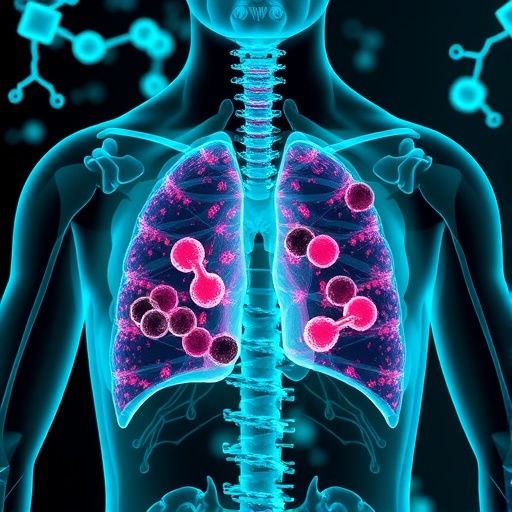Tuberculosis (TB) has long stood as one of the most formidable adversaries in the realm of infectious diseases, taking more lives globally than any other pathogen. The insidious nature of this disease is compounded by its resilience against many conventional treatments. This presents an urgent dilemma for medical science: how do we develop faster, more effective treatment protocols for TB, especially in the wake of rising drug resistance? Recent advances in artificial intelligence (AI) may offer a groundbreaking method to unlock the secrets of how TB drugs exert their effects, potentially revolutionizing treatment strategies.
In a substantial study spearheaded by a group of researchers at Tufts University, an innovative AI-assisted tool named DECIPHAER (decoding cross-modal information of pharmacologies via autoencoders) has been introduced. This tool is described as the next frontier in drug-testing methodologies, aiming to elucidate the intricate mechanics of how drugs interact with TB bacteria at a molecular level. Given the longstanding complexity of TB treatments, this research serves as a beacon of hope, indicating that a new era of drug development may be upon us—a time when we can strategically combine medications that will effectively target multiple vulnerabilities in the TB bacterium.
Previously, the understanding of how certain drugs eradicated TB bacteria was limited to general observations. Researchers could say that a drug killed the bacteria but struggled to pinpoint how this destruction occurred at the molecular level. In essence, it was like examining a battered crime scene without having all the pieces of the puzzle. The shapes and structures of bacteria could change under the influence of certain drugs, but the relationship between these visible alterations and the underlying genetic activity remained uncharted territory. Aldridge, a key author of the study, metaphorically compares it to witnessing the aftermath of a fight but lacking insight into the instigators or the sequence of events.
The pioneering work that emerged from the Tufts lab focuses on a combination of morphological profiling and molecular analysis. Researchers used high-resolution imaging to capture TB bacteria just before they succumbed to the effects of new drugs. These images reveal crucial shifts in cellular architecture, providing an intriguing visual narrative of the drug’s impact. The investigation doesn’t stop there; the researchers then link these visual insights to transcriptional profiles—detailed accounts of gene activity within the bacteria. By harnessing AI’s predictive capabilities, they can better predict which molecular activities correlate with specific physical changes, thereby mapping out the drug’s mechanisms of action more accurately.
This investigative process transforms drug testing from an ambiguous murkiness to a landscape rich with clarity. The traditional reliance on broad drug classifications—like determining whether a medication targets the cell wall—can now be nuanced by identifying specific pathways through which TB bacteria fall. For instance, researchers initially presumed that a promising TB drug worked by compromising the bacterial cell wall. However, DECIPHAER revealed a different narrative showing that this drug primarily disrupts the respiratory chain, thereby hindering the bacteria’s ability to generate energy. Such revelations are invaluable and can significantly alter the course of drug development.
Moreover, the economic implications of DECIPHAER’s capabilities are monumental. Traditional methods such as RNA sequencing offer depth of information but come at a high financial cost and time investment. The ability of DECIPHAER to produce insightful outcomes from mere imagery drastically shortens the timeline for drug testing and makes it more accessible, particularly in resource-limited settings where TB is endemic.
This technology is not solely confined to tuberculosis. The potential applications could extend far beyond, with implications for treating various infectious diseases and possibly certain types of cancer. The researchers highlight their commitment to using DECIPHAER in collaboration with other labs and research institutions to foster the development of new treatments across the globe. The urgency surrounding TB treatment cannot be overstated; it encapsulates the pressing challenges of global health that necessitate innovative solutions.
The study published in Cell Systems illustrates that we are on the cusp of redefining how we approach drug development for some of the world’s toughest pathogens. By enhancing our understanding of TB’s vulnerabilities, we can usher in a more strategic and effective approach to treatment. In light of the tours de force of data that AI can run through, we are clearly entering a transformative phase in microbiological research. The amalgamation of traditional biological study methods with cutting-edge artificial intelligence promises a future where diseases like TB, once thought to be unconquerable, can be mastered.
As the research community looks to refine and operationalize these tools, the focus will shift to immediate applications in clinical settings. While this research has laid the groundwork, the next steps involve rigorous testing, validation of findings, and ultimately, the integration of these insights into actionable treatment protocols. The collaboration between artificial intelligence and microbiology could catalyze a rapid evolution of TB therapeutics, thereby saving lives globally.
In conclusion, as we venture forward, we must remain vigilant and optimistic about the innovations in science and medicine. The path laid out by this research not only offers a glimpse into advanced drug discovery methods but also inspires a new generation of scientists to think creatively and analytically about the challenges that lie ahead. The integration of high-tech solutions in traditional fields like medicine is paving the way for spectacular advancements that bring us ever closer to conquering diseases that have plagued humankind for centuries.
Subject of Research: Role of AI in Identifying Mechanisms of TB Drug Action
Article Title: Integration of multi-modal measurements identifies critical mechanisms of tuberculosis drug action
News Publication Date: 29-Jul-2025
Web References: Cell Systems Study
References: DOI 10.1016/j.cels.2025.101348
Image Credits: Credit: Courtesy of the Aldridge Lab
Keywords
- Tuberculosis
- Artificial intelligence
- Drug development
- Antibiotic resistance




